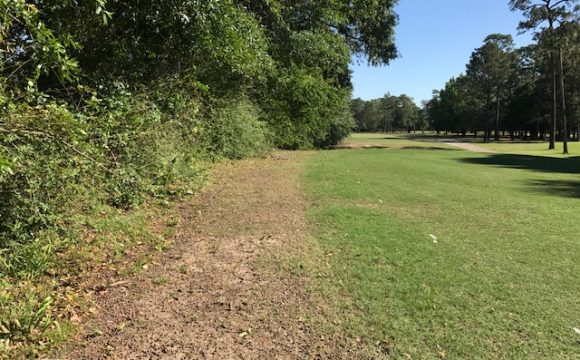The familiar saying “you can grow grass or you can grow trees, but not both” has never been more true than during the extremely dry conditions we’ve suffered this year. Our trees are a defining feature of the look and feel of Bluegrass. Many have been standing for decades. But their roots have been problematic for quite some time. When tree roots compete with turfgrass for water and nutrients, they usually win the battle.
Tree roots can actually grow out from the base of a tree a distance equal to two to three times its height. About 10% of the wood mass of trees is found underground and most of that is very small fine feeder roots that can extend into turf areas. The majority of these feeder roots will be in the upper 8 to 12 inches of the soil profile – the same root zone as the turfgrass. Incredibly, a mature oak tree can use as much as 80 gallons of water per day.
Many of our trees have grown so large that their roots are causing turf thinning in the primary rough and even out into the fairways and around the tee complexes. We tried additional irrigation and fertility actions all summer, but our best efforts could not make up for the lack of rain in June and September.
So we are trying something different during this offseason: pruning the surface roots of trees to reduce the competition for water and nutrients. We are using a new tool to cut through the close-to-surface roots, without damaging the deeper roots that keep the trees healthy. A company called Imants, headquartered in the Netherlands, introduced the root pruner that bears its name 15 years ago. Mounted behind a tractor, the Imants RootPruner cuts roots up to 4 inches in diameter to a depth of 10 inches.
As you can see in these videos, pruning the roots is a slow process, with the two blades slicing small parallel trenches that leave very little damage behind. That description does not do justice to the brute force the RootPruner expends. The crew that has been operating it say they feel like they have been in a rodeo after a pruning session!

We are initially pruning along the tree lines down the length of the holes. We will then target more localized areas of impact. Other courses have seen really good results from similar efforts, so it will be interesting to see how our turf looks this time next year.
Maybe someday when you pull your drive left on #13, we might actually be able to get enough grass to grow there to keep your ball from automatically rolling OB!
